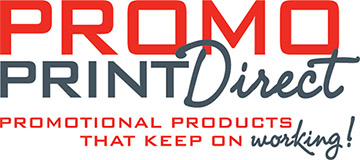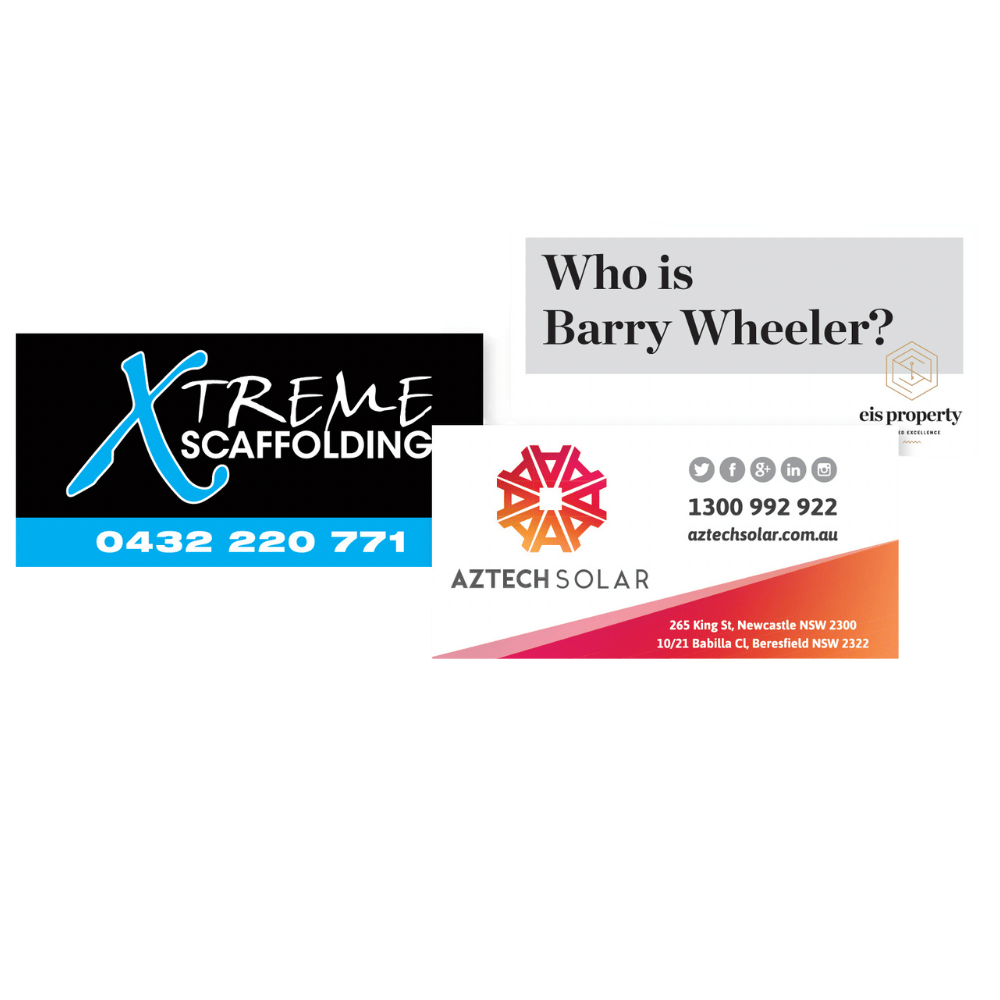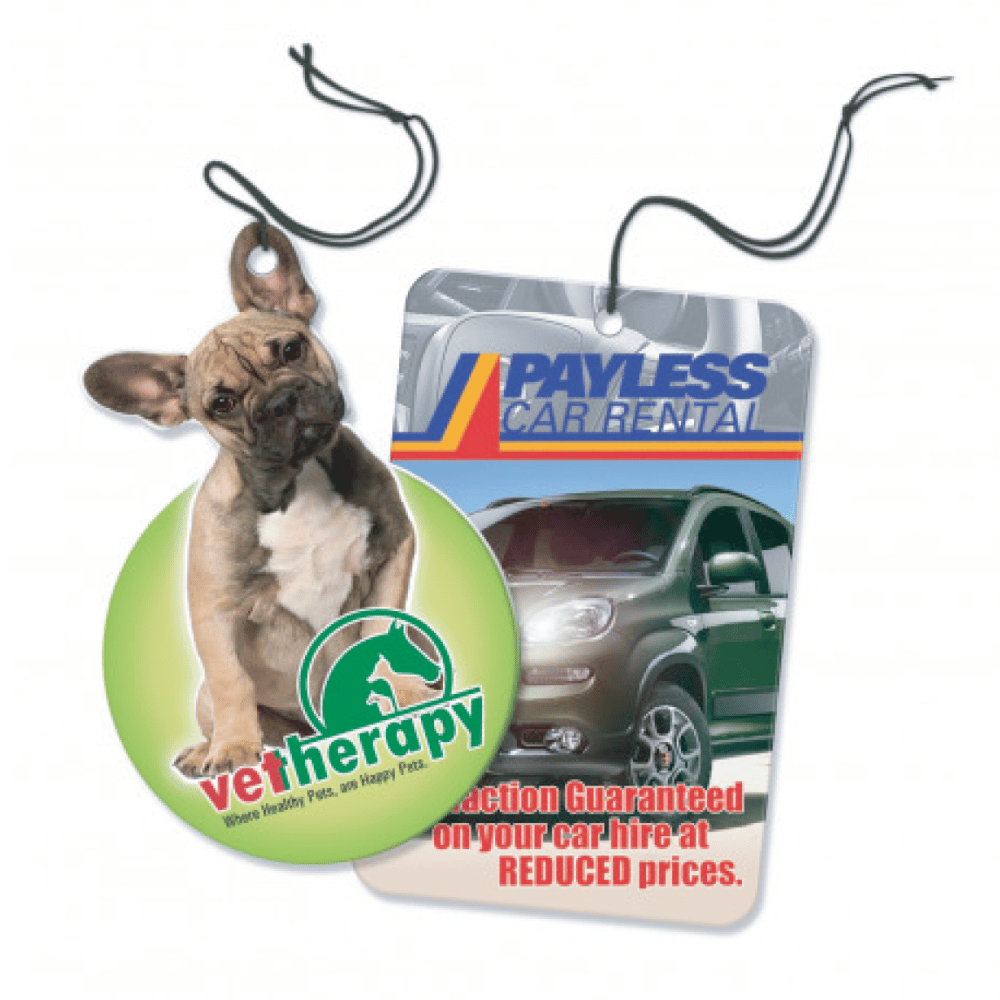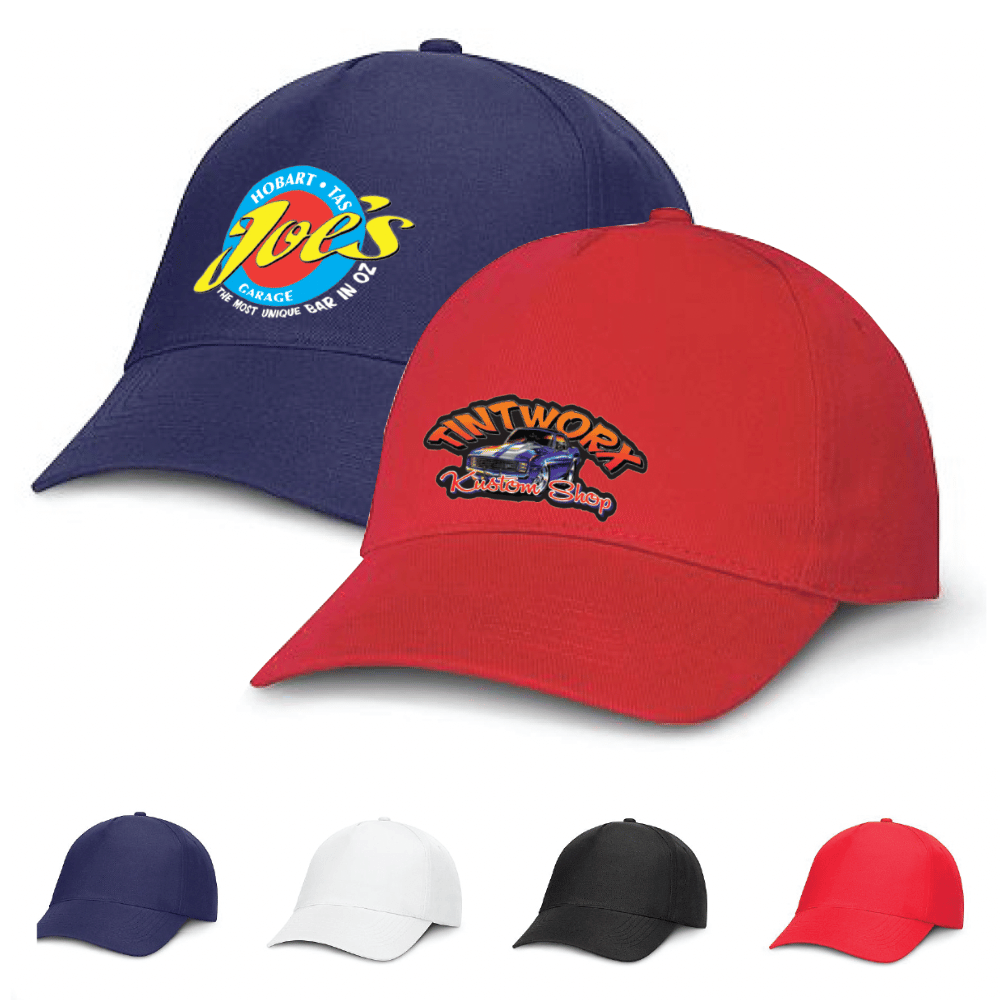Good design is essential. Time and effort in planning your message will be rewarded with a better outcome. Visual impact and easy reading are essential. Consider design from the customer’s point of view and what they need to know. Consider colour carefully – different colours will have a different level of impact depending on the background. Once you have a good design, stick with it! Repetition of a good design across a range of products and mediums will ensure a consistent and recognisable message.
- Less is more – keep it simple. Does your fax number really need to be displayed on your pens?
- Quality input equals quality output. Clear, uncluttered design has a bigger visual impact than trying to include every detail of your business.
- Only include information that is necessary – the key message you want on your product. Sometimes, all you need is your logo.
- Keep in mind the purpose of the product and the target market. Do you want repeat business or new customers? Is it a vehicle service sticker or a magnetic clip? Each has a different purpose and a different message.
- Make sure that the information on your product is correct for the lifetime of the product. Eg – don’t advertise a monthly special on an item that is used for twelve months.
- Keep in mind the size of the area to be printed and the type of printing process used. Fine lines will not come out clearly on pens, close registration on designs that are to be screen printed may not be possible etc…
- Remember that promotional products are vehicles for advertising – keep personal preferences out of the equation and consider the end result you are trying to achieve.
File Types & Size
Artwork files come in all sorts of different formats depending on what they will be used for. For example, artwork designed for a website is very different from artwork designed for printing purposes. The better the quality of the artwork file and higher the resolution, the better the final product will be.
Where possible, artwork should be provided as an .epsvector file. This format is the most scalable and accurate representation of colours and design. The .eps file should be done with all text converted to outlines.
A Tagged Image File Format (.tif) file may also be used.
If .epsor .tiffiles are not available, we can manipulate and utilise high resolution (over 300 dpi) .jpeg or .pdf files. Promo Print Direct is also able to use high resolution scanned images that are free from any marks or creases.
Minimum resolution for graphic files for printing purposes is 300 dpi. As a comparison, most web images are only 72 dpi which is screen resolution. Images at this resolution will come out grainy and are not suitable for printing.
In most instances we prefer files to be provided in CMYK colour format. The only exception is where we print neoprene products through die-sublimation (eg Mousemats, Trucker Caps and Can or Stubby Coolers). We utilise an RGB profile for these products because it achieves a much deeper and more vibrant colour. See our Colour Guide below for more information.
To summarise:
- Minimum resolution to be 300 dpi
- Save files in a CMYK colour format – .eps or .tif or RGB format for neoprene products
- Text to be converted to outlines or curves
- Images to be embedded or supplied as separate files
- Supply electronic art by email or CD but please send a colour proof where possible
Colour Guide
The type of printing process used will dictate the range of colours. A full digital photograph cannot be rendered using a screenprinting process, for example. Our product catalogue specifies the type of printing process used for each product.
Promo Print Direct uses:
CMYK : ‘Cyan, Magenta, Yellow & Black’, is an Industry standard formula that is designed to give the most precise colour reproductions.
RGB : ‘Red, Green & Blue’, is mainly used for screen and photography with a much broader and more intense range of colours than CMYK. We only use RGB colours when printing via die sublimation. Products using this process are the neoprene Trucker Caps, Mousemats and Stubby or Can Holders.
Standard CMYK Spot Colours : Our standard colours are a range of nine basic colours (red, yellow, green, blue, black, orange, white, gold and silver), that are available for specific printing processes. This allows printing to be done very economically keeping the product price as low as possible. Note that custom colours are available and conditions apply. Contact us for further information.
Our product guide details where standard colours are specified. These products are normally ‘gang’ printed, where several jobs are printed together. Below is our range of standard colours, but please note that colours may vary between products.
![]()
Standard RGB Spot Colours: Our range of RGB spot colours are used for neoprene products printed through the die sublimation process. These products are our Trucker Caps, Mousemats and Can or Stubby Coolers. Please note that any other colours can be printed, however these colours are our standards that have a guaranteed result.
Other : Products such as digitally printed stickers have no restriction on the type of colours used. The printing process uses a toner based colour instead of ink. There is no restriction on the colour used for pad printing either; however opaque colours such as white, silver and gold provide a better outcome on darker backgrounds.
Promo Print Direct does not use:
Pantone : PMS or Pantone colours are designed to be printed as separate colours via a specific printing process and onto a white background. The PMS range originates from 14 basic Pantone colours and is mixed in a similar manner as house paint with specific quantities contributing to the final PMS colour. PMS colours cannot be matched to either digital or CMYK colours and are to be used as a guide only.



